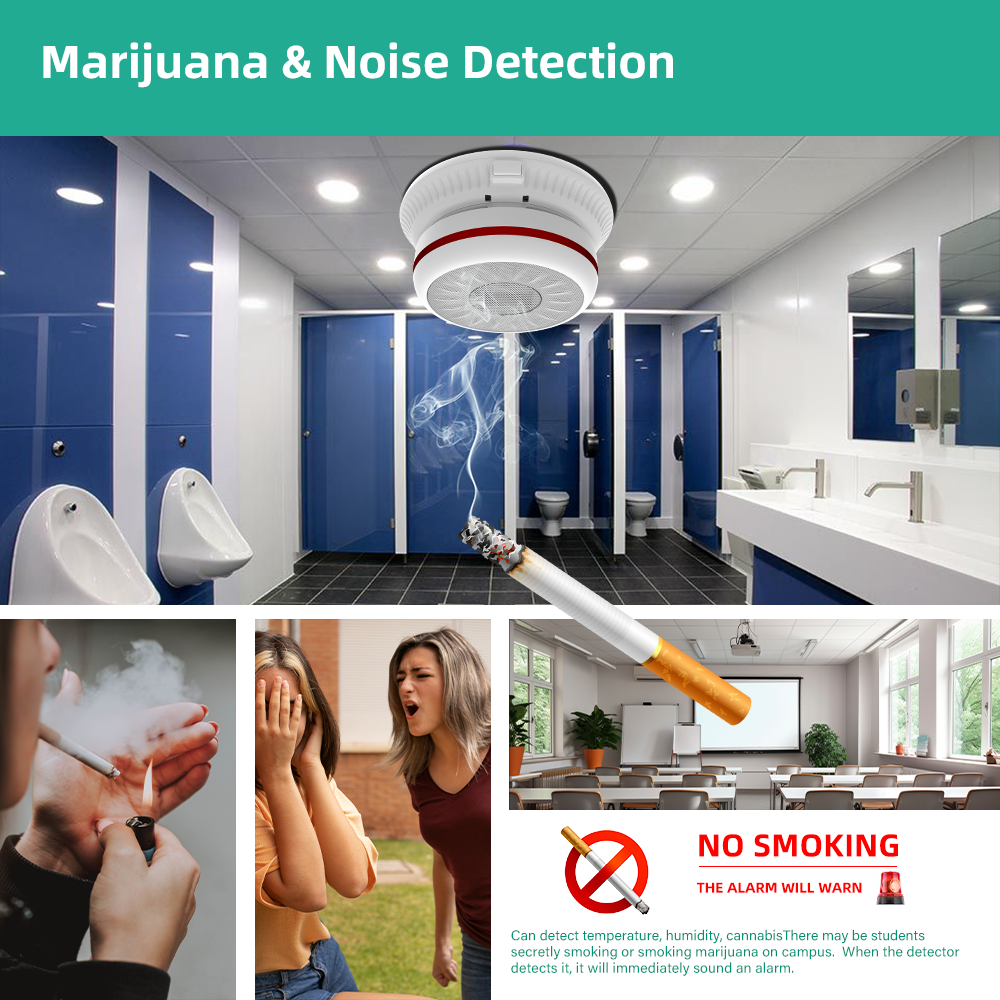In American schools today an unnoticed epidemic is unfolding every three minutes: students are caught smoking. Experts in the field of public health call vaping by teens as a crisis as well, with the CDC noting that 40% of high school students and 20 percent of middle schoolers had a go at vaping with electronic cigarettes. Nearly all (99%) of these devices have nicotine an addictive chemical that alters the brain’s wiring and acts as a gateway to smoking cigarettes. Teachers, parents, and administrators are under increasing pressure to take action. Vape detectors are a sophisticated gadget that has become a campus must-have. Triton as well as 3D Sense are the two most sophisticated vape detectors schools can make use of. They do more than sound an alarm.

Vape Detectors: Precision without Intrusion
Modern vape smoke detectors like the Triton Ultra Smart Safety Sensor does not rely on recording or cameras to guarantee absolute privacy while providing actionable intelligence. It uses the latest particulate sensor technology to analyse the air in near-real time. It sends out alerts to personnel via text message or email when vape aerosols, or masking agents, such as strong perfumes, are detected. False positives are very low, allowing administrators to be confident that any notification will receive immediate attention.
The cost of deployment can be reduced if one device covers the entire space. Within 5 weeks of the installing, Triton customers typically report significant reductions in the frequency of vaping. Why is that? Data-driven deterrence. The Triton Cloud Dashboard provides “hotspots” where vaping occurs more often and at which times, which allows the principals to redirect hall monitors or security personnel precisely to the areas they’re required.
Beyond Detection – Occupancy Visualization & Loitering Control
Triton is different from basic vape detectors due to its patent-pending technology for visualising occupancy. While not capturing sound or images it is the ULTRA sensor tracks people count and dwell time in sensitive locations. Administrators will see heat maps that are color coded showing the times when bathrooms are transformed into social spaces that are ideal to smoke and also the extended close contact that causes respiratory illnesses.
Stanford Medicine research emphasizes the risks. Students who vape are 5 times more likely than others to contract COVID-19. Vape detectors at schools can improve air quality by reducing crowd. They also lower transmission risks for airborne pathogens. Post-pandemic, this dual advantage has raised these devices from optional to mandatory.
Transforming Data into Discipline and Dialogue
Numbers tell a compelling narrative. The Triton reports module compiles quantifiable evidence such as incident timestamps and places, frequency trends and locations that schools can present to school boards, parent groups as well as students themselves. There is less skepticism when a campus shows 60% less detections after detector installation. Parents will notice that the students are involved; they are also aware of the consequences.
Educators amplify impact by announcing the presence of vape detector from day one. For instance, the 3D Sense model is marketed as an anti-deterrent. “Let students know that the air is watching them,” guidance materials advise. The social cost of triggering an alarm is usually greater than a instruction.
A Multi-Front Strategy Schools Can’t Ignore
Vape detectors cannot stop smoking by themselves, but they’re part of a comprehensive solution.
Monitoring Alerts that are real-time capture incidents as they occur.
Education – Research-based findings are the main source of anti-vaping education.
Dissuasive signs that are visible and consequences that are clear will influence behavior.
Discipline – Hotspot data justifies targeted enforcement.
Support Schools combine detectors with cessation services to help struggling students.
The CDC stresses that reversing the trend demands “buy-in from parents, teachers, and society.” Vape detectors supply the missing link: objective, immediate feedback that turns good intentions into measurable results.
Simple Deployment
Registration of devices can take minutes in the Triton Cloud Dashboard. Administrators can add contacts, set alert thresholds, and customize the rules for notification. One demo shows the ease of use that this interface offers. can be. Schedule one to view live hotspot maps as well as historical graphs in the action.
Conclusion
Every puff you don’t take is a risk to an entire lifetime of addiction. Inconsistently reported bathroom events can be hazardous for your health as well for safety. Vape detectors, such as 3D Sense and Triton for schools offer more than surveillance. They also deliver intelligence as well as discouragement and proof of progress. The schools that install them do not simply react to the issue of vaping; they manage it.
These devices transform nebulous fears into real victories. With just one sensor for every room and security-grade occupancy information the tools can change vague worries. In an era when 40 percent of high school students have already tried it and middle-school enrollment is rising daily, waiting longer seems sensible. Be sure to be the first to know what your school’s media is proclaiming.
